Incredibox Sprunki review
My Personal Journey into Sprunki
From the moment I first laid my eyes on Incredibox Sprunki, I felt an instant connection that went far beyond a simple introduction to a game. I have always been drawn to artistic experiences that blend music and playful interactivity, and Sprunki provided a unique environment where my creativity could flourish. Navigating its charming interface and familiar yet refreshingly novel musical segments quickly made me appreciate the game on a deeply personal level, as it resonated with my inner rhythm and passion for digital art.
Exploring the Interactive Musical Landscape
Incredibox Sprunki opens up an eclectic world of sounds and beats that capture my attention immediately. The gameplay revolves around mixing distinct audio layers to create unique soundtracks. I found myself experimenting with the different loops and records, each pulse and tune sparking newfound inspiration. The game offers an environment where my sense of musical adventure is pushed forward, and I discovered that every iteration is a step in a creative journey that evolves with every tap and swipe.
What fascinated me from the start was the freedom to manipulate each sound element. Every click allowed me to layer harmonies or adjust rhythms, and I quickly learned that the interface was designed to accommodate intuitive play. With each session, I observed new combinations that not only enhanced the overall auditory experience but also encouraged me to think outside traditional musical boundaries. The game rewarded experimentation and allowed me to trust my instincts as I built complex, layered compositions on the fly.
Delving into the Visual and Aesthetic Appeal
Beyond its sonic charms, Sprunki captivated me with its vibrant and joyful visual design. I found that every graphical element was infused with color, personality, and details that aligned perfectly with the game’s musical identity. Every character, beat, and effect was meticulously designed to evoke a specific emotional and sensory response, allowing me to dive into a world where audio and visual artistry complemented each other harmoniously.
As I navigated the interface, I could see that each icon and animated character was more than just a background element; they were pivotal to how I interacted with the game. The overall aesthetic was playful yet mature, striking a balance between whimsy and sophistication that kept me engaged for hours at a time. I often caught myself lingering over subtle details in the background, appreciating how the design contributed to the sensory feast that was both soothing and invigorating.
Immersive Sound Experiments and Real-Time Creativity
One of the aspects that resonated with me most in Sprunki was the emphasis on combining sounds in real-time. The game challenged me to blend audio effects seamlessly as I followed my gut instinct. I particularly enjoyed the fluidity with which each sound was transitioned into the next. It felt as if my actions on the screen directly influenced a live band in perfect synchrony, making every move feel significant and impactful.
While experimenting with different rhythms, I experienced the excitement of immediate auditory feedback. This real-time interaction encouraged continuous experimentation, and even subtle changes in tempo or pitch drastically altered the mood of my creation. This partnership between my input and the game’s output pushed me to explore more intricate soundscapes than I initially anticipated, reminding me of spontaneous jam sessions with trusted friends.
Delicate Balance of Complexity and Simplicity
As a lover of both intricate musical arrangements and simple, accessible designs, I appreciated Sprunki's knack for balancing complexity with simplicity. The interactive elements are elegantly laid out, inviting me to dive into its layered structure without ever feeling overwhelmed. I noted that while the basic mechanics were relatively straightforward, the depth of interaction was vast enough to keep even the most avid creative minds engaged over time.
There was a moment when I sat back and reflected on how the game perfectly maintained its charm regardless of the level of intricacy I brought to it. The interface supported both minimalist sound offerings and elaborate compositions, ensuring that every session, whether experimental or detailed, felt rewarding. This balance is a testament to the developers’ understanding of diverse user needs, making the game accessible to novices while keeping it intriguing for advanced users.
Experimenting with Customization Options and Flexibility
My journey with Sprunki was also marked by the fascinating breadth of customization options available. I learned that the game wasn’t just about following preset sequences, but rather, it encouraged me to personalize my musical experience. I reveled in the ability to adjust various parameters—ranging from volume levels to the spatial alignment of beats—to create a tailored creative environment.
The freedom provided was liberating. I could craft meticulously timed rhythms that resonated with the energy I felt at any given moment. At one point, I decided to rework an entire musical piece from scratch, and the intuitive control panel allowed me to reimagine everything—a personal haven where I could express my emotions in a playful yet structured setting. This hands-on interaction reinforced my belief that Sprunki was as much an artistic tool as it was a game.
Engaging with the Game's Evolving Narrative
What surprised me most was how Sprunki incorporates an evolving narrative within its interactivity, even without the usual storytelling elements found in conventional games. I found that every session was like writing a short story in sound, with each beat representing a sentence that conveyed parts of my inner dialogue. This depth of engagement made the gameplay not only about scoring or progress but about expressing traces of my personality through music.
The sense of storytelling was subtle yet potent. Each character in the game wasn’t merely an icon but a symbolic representation of different musical energies and personalities. As I layered my beats, I could almost picture these characters engaging in a playful debate of moods and emotions. It felt like I was part of a larger, ongoing conversation—a musical narrative that was as unpredictable as it was delightful.
Capturing the Flow of Emotions and Rhythms
Perhaps one of the most unexpected gifts that Sprunki offered was an outlet for emotional expression. As I experimented with various scales and tempos, I discovered that my feelings could be mapped directly onto the game’s auditory palette. There were times when a particularly mellow loop evoked calmness, while rapid, intricate rhythms mirrored moments of excitement or contemplation.
This alignment of emotional flow with musical structure took me on an introspective journey that mirrored the highs and lows of my day-to-day life. Throughout my sessions, I often glanced at the screen and smiled at the synchronicity between my internal state and the evolving soundscape. I was not just controlling a sequence of sounds; I was in dialogue with a creative force that translated emotions into tangible rhythms and melodies.
Interactivity and the Joy of Discovery
The element of surprise in Sprunki kept my adrenaline high and my curiosity sharp. Every new combination of sounds presented itself as an opportunity to discover something unique—a never-before-heard composition waiting to be unearthed by my fingertips. I began every session with a sense of anticipation, eager to see if today’s experiment would unveil a hidden gem in the form of a catchy groove or a peculiar tempo.
This joy of discovery was compounded by the game’s responsive design. Each tweak or adjustment felt like uncovering an architectural secret in a beloved instrument. The interplay between structured loops and spontaneous creation transformed even a casual session into an artistic treasure hunt. I often lost track of time, completely immersed in the pursuit of that elusive perfect rhythm that was uniquely mine.
Social Interactions and Collaborative Creativity
Another aspect that enriched my experience with Incredibox Sprunki was the subtle encouragement of social interaction and collaborative creativity. I found that the game had the potential to serve as a platform where friends and even strangers could share their musical experiments. While I usually enjoyed solitary sessions, there were moments when I invited peers to join, and our combined creativity led to exhilarating, shared compositions.
During these collaborative moments, I realized that the game transcended mere gameplay—it became a communal exploration of sound. Each participant contributed their unique style and perspective, resulting in a layered composition that was greater than the sum of its parts. I appreciated how Sprunki’s design allowed for both personal expression and collective harmony, as it bridged the gap between individual creativity and group dynamics in such an organic manner.
The Mechanics Behind Fluidity and User-Friendly Design
Investing time in understanding the mechanics of Sprunki revealed a world of thoughtful design principles that catered to both casual users and those with a deeper appreciation for musical theory. I appreciated how every element in the game, from the responsive controls to the rapid feedback system, was crafted with deliberate care. The interface never felt cluttered, and every control was positioned in a way that minimized the cognitive load, allowing for a seamless transition from thought to sound.
In my personal testing, I observed that the fluidity of movement between different sound modules enabled a kind of rhythmic multitasking that was both engaging and challenging. The design supported a hands-on approach where every slight adjustment carried weight, driving home the fact that each decision contributed to the overall performance. This balance between control and spontaneity underscored the game’s commitment to creating an environment that was as intuitive as it was rich in possibilities.
The Multifaceted Experience of Crafting Personal Soundtracks
For me, Incredibox Sprunki was more than a game—it was a gateway to developing a personal musical language. Every session allowed me to experiment with form, structure, and dynamics in a manner that felt entirely liberating. As I played around with different combinations, I began to see a reflection of my own creative growth within the evolving soundscapes. Crafting my personal soundtracks was akin to composing a diary of emotions, with each beat marking specific memories and moods.
The process was profoundly engaging. I found that the game encouraged trial and error, rewarding those attempts with unpredictable yet mesmerizing outcomes. I cherished the moments when a simple adjustment unlocked a cascade of harmonious responses that felt both surprising and inevitable. The ability to articulate my inner musical thoughts with such ease not only deepened my engagement with the game but also expanded my appreciation for the spontaneity of creative expression.
The Exciting Challenge of Mastering a Unique Audio Interface
As someone who enjoys mastering new challenges, I found that learning the intricacies of Sprunki’s interface was a rewarding experience in itself. The game presented intricate layers that required both precision and a bold sense of experimentation. I dedicated time to understanding how each control affected the outcome, finding joy in the iterative process of learning and applying new techniques.
I recall several instances when a minor tweak in one of the modules unexpectedly reshaped the entire track, leading me to new sonic territories. This constant flux and the potential for endless variation kept me coming back, as every session felt like a challenge to better understand the rich tapestry of sounds that lay before me. The interface didn’t just serve as a tool; it became an extension of my creative intent, driving me to continually push the boundaries of what I thought was possible.
The Thrill of Unbounded Creative Expression
Incredibox Sprunki continuously reminded me that the realm of digital music is as expansive as the imagination itself. I felt empowered by the game’s capacity to let me express nuances in mood and rhythm that are often hard to articulate with words alone. Every session served as a canvas, and every sound as a brushstroke that painted a vivid picture of my state of mind.
The game’s emphasis on unbound creative expression encouraged me to venture into unexplored musical territories. I found that, unlike many linear gaming experiences, Sprunki embraced imperfection and randomness, making it an ideal platform for creative discovery. There was an invigorating thrill in knowing that no two creations would ever be identical, each performance a reflection of the fleeting moment of inspiration that birthed it. This openness to creative freedom elevated my experience and instilled in me a newfound respect for the artistry behind digital music platforms.
A Living, Breathing Sound Ecosystem
Throughout my time with Sprunki, I came to regard the game as a living, breathing ecosystem that responded organically to my creative impulses. Every element within the interface, from the subdued background loops to the vibrant, high-energy sound effects, maintained a delicate balance that sustained a dynamic audio environment. I was continually impressed by how the system integrated each part into a holistic experience that felt almost organic in its progression.
This level of integration meant that my interactions weren’t isolated gestures; they were contributions to a larger, evolving performance. I experienced the game as an active conversation, where each note and rhythm responded to my input with a touch of personality. What I appreciated most was that this ecosystem was forgiving and ever-adapting, inviting me to experiment time and time again without the fear of irreparable mistakes. The responsiveness and interconnectedness of the system underscored the incredible effort invested in creating a platform where art and interaction could coexist so gracefully.
To download the app, you will get links to the Official Website and/or official digital markets.
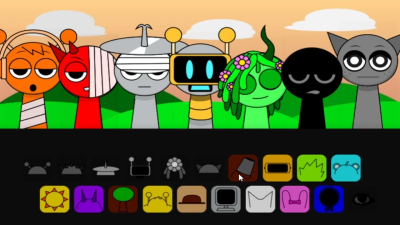
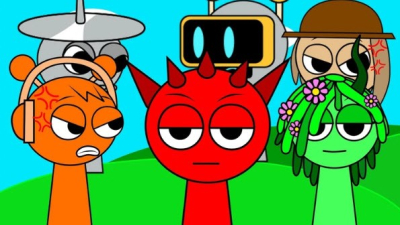
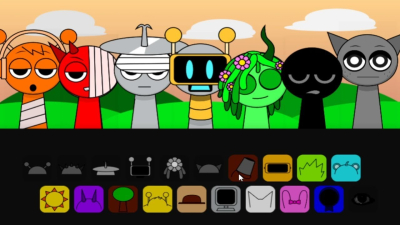
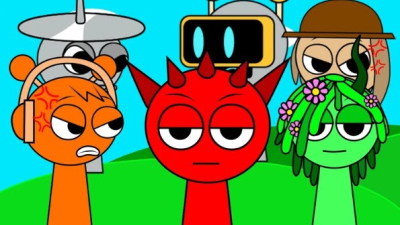




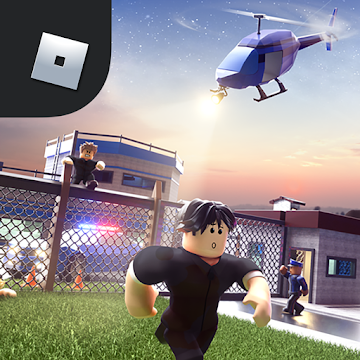





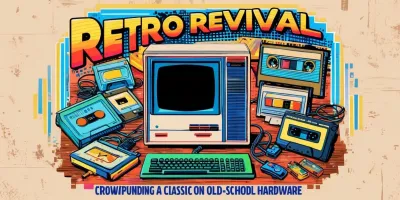
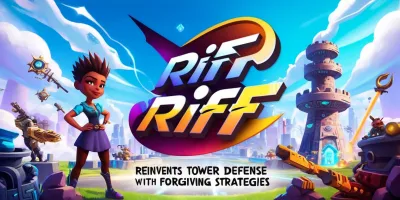

Leave a comment
Your comment is awaiting moderation. We save your draft here
0 Comments